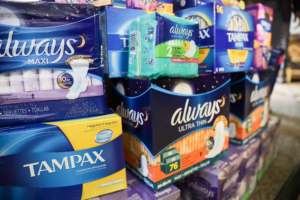Period Poverty in China and Current Campaigns

The monthly cost of purchasing menstrual sanitary products is not a small amount for females worldwide. “Period Poverty” refers to the inability to afford pads, tampons or liners to manage menstrual bleeding. A campaign in China is working on addressing period poverty for girls and women in the nation. However, period poverty still remains a women’s rights issue globally.
The General Problem
The International Federation of Gynecology and Obstetrics (FIGO) reported that around 10% of young women around the world are now unable to afford period products. FIGO also found that, during menstruation, 12% of women have to improvise with alternatives that are potentially ineffective and unsafe. According to UNICEF, more than 500 million females lack a proper place to change their menstrual products during their periods. Period poverty causes long-term health impacts for girls and women. Period poverty also affects time management, the chances of receiving education and engaging in employment. All of these factors influence a woman’s lifelong development and well-being.
Period Poverty in China
The situation of period poverty in China is not much different. Many women and young girls, especially in rural areas, cannot afford feminine hygiene products. Instead of sanitary pads, impoverished women have to use toilet paper or old cloth. Any available yet unsafe materials on hand — even bark for some women in extreme poverty — are utilized to manage menstruation. Unfortunately, the lack of basic menstrual knowledge and the common menstruation taboo in China only worsen the situation. It is difficult to practice optimal hygiene when managing menstruation without the necessary products or facilities. As a result, many girls in rural China skip classes or even leave school once they start menstruating.
Campaign for a Lower Tampon Tax
In recent years, the Chinese public is growing more aware of period poverty in China, calling for more affordable sanitary products. Additionally, the public advocates for more humanitarian public health policies that take women’s biological needs into account. As of 2020, the Chinese government regulates a 13% sales tax on feminine sanitary products. That is 4% higher than the 9% tax for essential daily necessities such as grain and water.
Many other countries, including India and Malaysia, have either exempted or reduced the tax on sanitary products. These nations do so for the sake of gender equality. In response to period poverty in China, a couple of online campaigns emerged in the nation over the past few years.
The Stand by Her Project
Some philanthropists and social organizations have jumped to the cause of addressing period poverty. They have stood up first to help the low-income women in underdeveloped regions. So far, the Stand by Her initiative is one of the most well-known and large-scale projects that deal with period poverty in China.
Liang Yu Stacey, a 24-year-old Chinese feminist and activist, initiated the “Reassurance for Sisters Fighting the Virus” online campaign in early 2020. She aimed to raise money to provide feminine sanitary products for the health care workers fighting against COVID-19. The project then extended to a broader scale and evolved into Stand by Her.
Stand by Her is a grassroots movement that coordinates donation, procurement and distribution of menstrual products to girls and women across China. In addition, the project also hands out brochures and holds lectures in middle schools to normalize menstruation and sex education. In the first phase of 2020-2021, the team plans to help more than 6,000 girls from 33 schools across China. Within three days of opening the donation portals, Stand by Her raised 368,700 RMB ($54,500 USD).
The online conversations, campaigns and donations display some positive signals in the area of menstruation. The taboo associated with menstruation is gradually dissolving. However, reducing the tax on women’s menstrual products would be a significant win for women’s rights in China.
– Jingyan Zhang
Photo: Flickr
